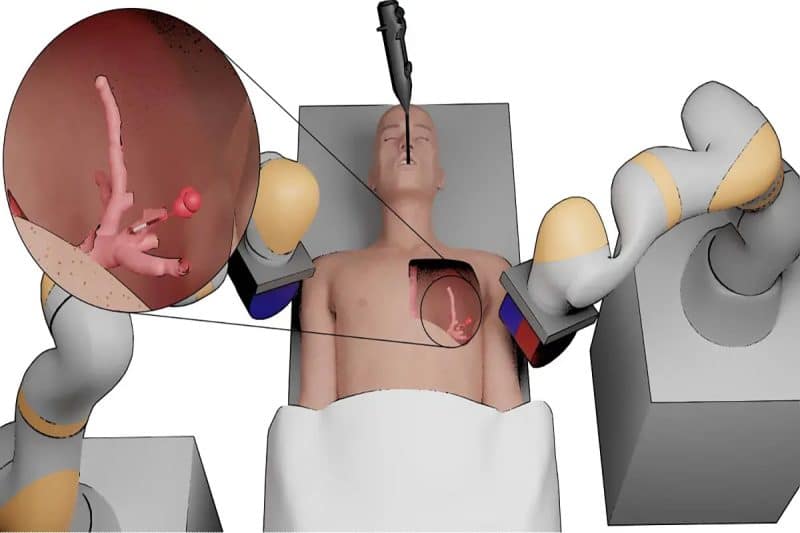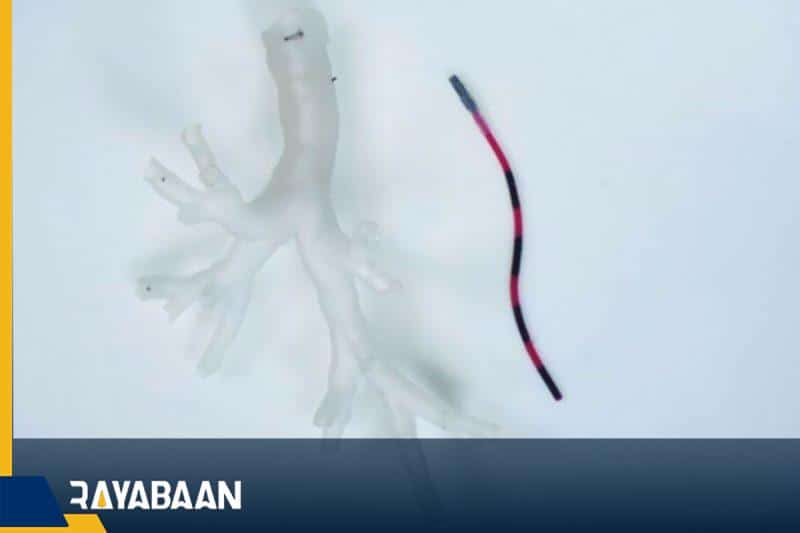Making robots that can cure cancer by entering the lungs
Scientists have been able to create robots that can treat cancer by moving inside the lungs.
Scientists have developed tiny robotic tentacles that can move inside the lungs to diagnose and treat cancer. These magnetic tentacles, which are only 2.4 mm in diameter and are very soft, adapt their shape to the anatomy of the body by magnets. They are passed into the lungs through the end of a bronchoscope – a thin tube with a light and camera.
The robotic tentacles report both their shape and position to the doctor as they move and once they reach their destination, they begin local treatment through an embedded laser fiber.
Scientists at the University of Leeds tested this robot, which was developed in the Storm Laboratory (STORM) of this university, on a corpse. They found that these prongs can travel 37% deeper than standard equipment and cause less tissue damage.
The advantage of this new approach is that it conforms to anatomy and is completely magnetically controlled, said Professor Pietro Valdastri, director of the Sturm Laboratory, in a statement. These three main features have the potential to revolutionize the movement of robots inside the body.

An alternative to chemotherapy
In time, the research team hopes to revolutionize lung cancer treatment. Lung cancer has the highest cancer death rate worldwide, killing 34,800 people in the UK alone each year. Currently, treatment is done through methods such as surgery, chemotherapy, or radiotherapy, which are invasive methods.
This robot can be a minimally invasive alternative. According to the researchers, this method can reduce pain, discomfort, and recovery time while improving accuracy and safety. It also allows that only malignant cells are targeted during treatment and healthy tissues and organs continue to function normally.
Dr. Giovanni Pettiglio, one of the researchers of this study, says that the goal was to perform the treatment with minimal pain for the patient. Remote magnetic stimulation allows scientists to do this using very soft probes that can reach deeper, conform to anatomy, and reduce damage from treatment.
The team is now gathering the data they need to begin human trials.
